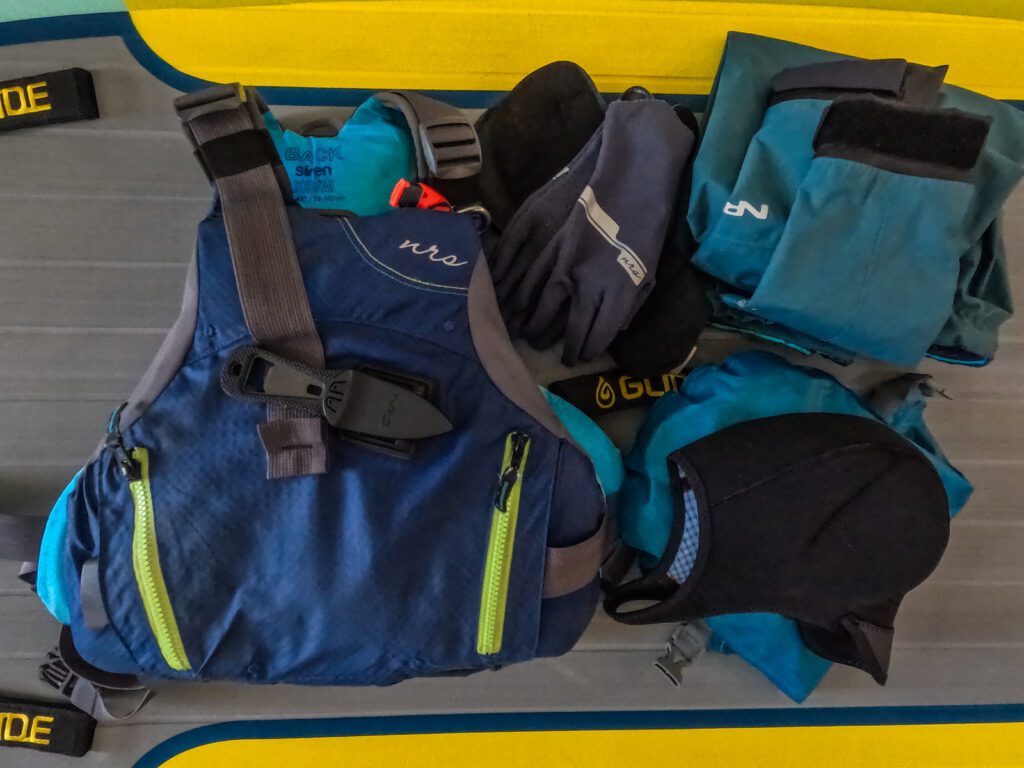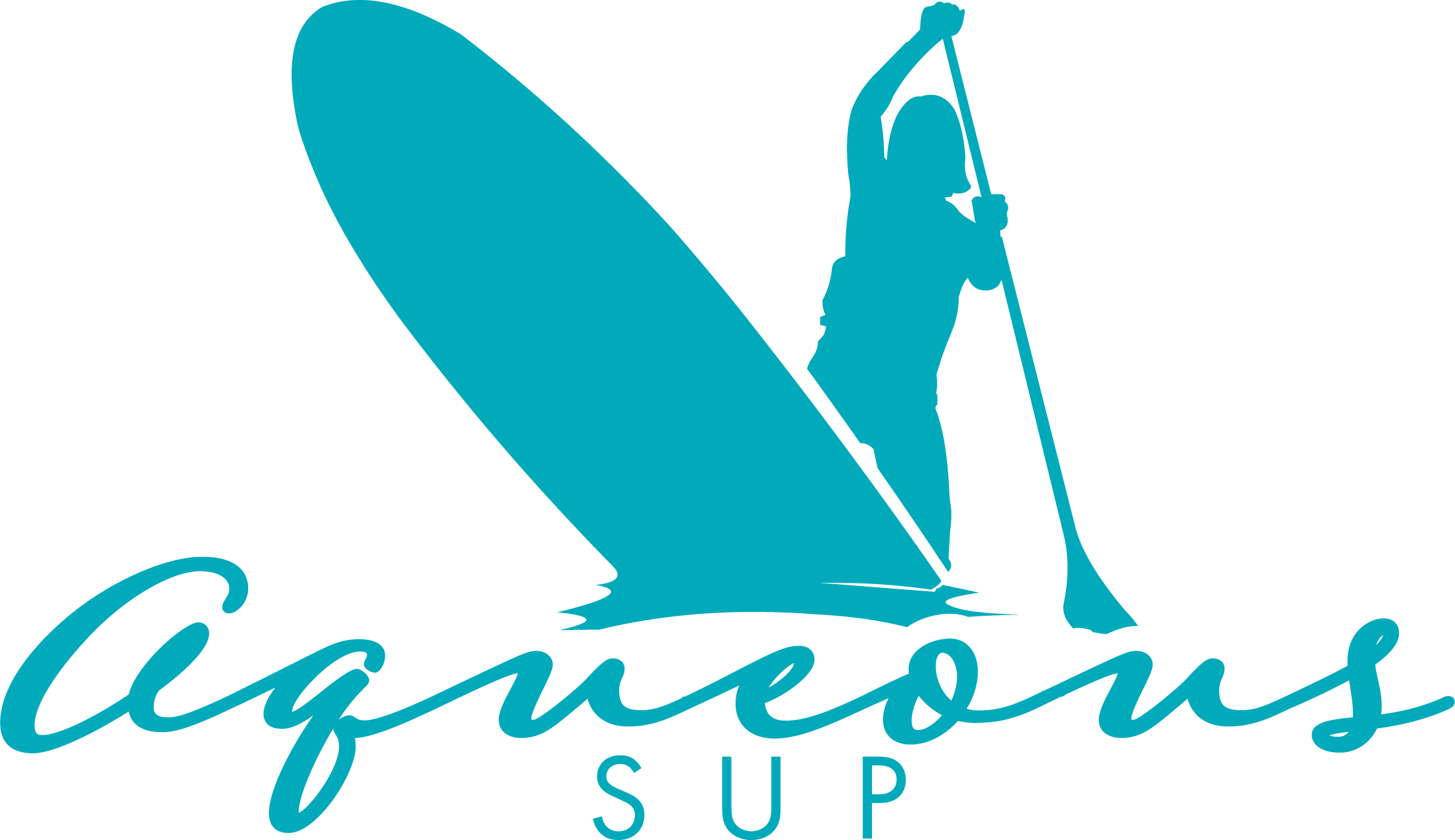Spring in the Tri-Cities is a beautiful contradiction—sunny one moment, blustery the next, and often with a splash of rain in between. While the urge to grab your board and hit the Columbia River is real, don’t let spring’s charm catch you off guard. The air may be warming up, but the water is still dangerously cold—often below 60°F through May.
At Aqueous SUP, we always say: dress for the water, not the air. In spring, what you wear matters just as much as your paddling skills. Let’s dive into how to dress smart, stay safe, and still enjoy everything this season has to offer.
Why Water Temperature Matters
In spring, the air might feel inviting, but our waters, especially the Columbia, are still slow to warm. Water temperatures under 60°F can lead to cold shock and hypothermia within minutes. Even strong swimmers aren’t immune. That’s why choosing the right apparel—whether it’s a wetsuit, drysuit, or transitional layers—isn’t just about comfort—it’s about safety.
Wetsuit or Drysuit: Your Primary Protection
Wetsuit: A wetsuit traps a thin layer of water against your skin that your body warms. It’s effective—but yes, it can feel hot when the air temps hit the 60s or 70s. If you’re wearing one and get too warm, just hop in or get wet for a refreshing cooldown.
- Early spring paddlers should go for a full wetsuit—typically 3/2mm or thicker.
- As the season warms, you can shift to a spring suit or farmer john/jane style.
Drysuit: A drysuit keeps water completely out and is ideal for early spring conditions. Pair it with insulating layers like fleece or merino wool underneath.
- Pro tip: A drysuit keeps you dry, but not warm—so layer wisely beneath it with moisture-wicking base layers (never cotton).
Transitioning as the Season Warms
Spring paddling is all about transitions—not just in nature, but in what you wear. As the water slowly warms, you can start phasing out heavier gear and explore lighter options like HydroSkin. These thinner, neoprene-lite layers come in a variety of thicknesses—usually 1.5mm, 1.0mm, or 0.5mm—and offer just enough warmth without the bulk of a full wetsuit. HydroSkin pants, jackets, and neoprene shoes are a great way to stay comfortable as you move toward summer conditions, especially when paired with a splash top on windier days.
Just remember: water temperature should always guide your clothing choices—not the sunny skies. Cold water can still be dangerous even on a 75° day.
Splash Wear: The Spring Paddle MVP
Splash wear is a great outer layer if you’re wearing a wetsuit or HydroSkin. If you’re in a drysuit, you can skip it—it’s already doing the job.
- Wind-resistant and water-repellent—perfect for cutting the windchill or staying dry during a surprise rain shower.
- Great to toss on over your wetsuit if the breeze picks up or clouds roll in.
- Lightweight and packable—it’s easy to stash in your dry bag until you need it.
Here’s why it matters:
One spring, during a longer training paddle, conditions took a sudden turn. Despite regularly checking the forecast, I got caught in a surprise hailstorm. Because I always carry extra gear, I pulled on my splash jacket over my wetsuit. My neoprene hoodie shielded my head from the hail, and I waited out the storm safely and comfortably on shore until it passed. Spring weather changes fast. Packing smart gives you the flexibility to adapt and stay safe when it does.

Don’t Forget the Details: Take These Essentials With You
Even on short paddles, a few small essentials can make a big difference—keeping you safer and more comfortable when the weather shifts.
- Neoprene gloves help you maintain grip and warmth, even on breezy days.
- Neoprene shoes or booties keep your feet warm and protected from cold water, rough shoreline surfaces, or slippery ramps.
- A waterproof wool beanie or neoprene hood helps retain heat—and offers protection from surprise spring hail.
- A buff or neck gaiter adds comfort, warmth, and sun protection all in one.
- Always wear your Personal Flotation Device (PFD)—no matter the conditions or distance.
- Use a quick-release leash to stay safely connected to your board, especially in moving water or variable conditions.
- Carry a paddler’s first aid kit with basic supplies like bandages, blister care, antiseptic wipes, athletic tape, sunscreen, and any personal medications—it’s small, but invaluable in a pinch.
Enjoy the Season—Safely and Confidently
Spring paddling in the Tri-Cities is peaceful, refreshing, and full of potential. With the right apparel, you can enjoy early-season sessions without worry—staying warm when it counts and cooling down when needed. Not every day is a paddling day—but when conditions are right, the proper gear helps you stay safe, comfortable, and ready for whatever spring brings.
We’d love to hear from you! What’s your go-to spring paddling setup—are you team wetsuit or team drysuit? Share your favorite gear and tips with us in the comments.

